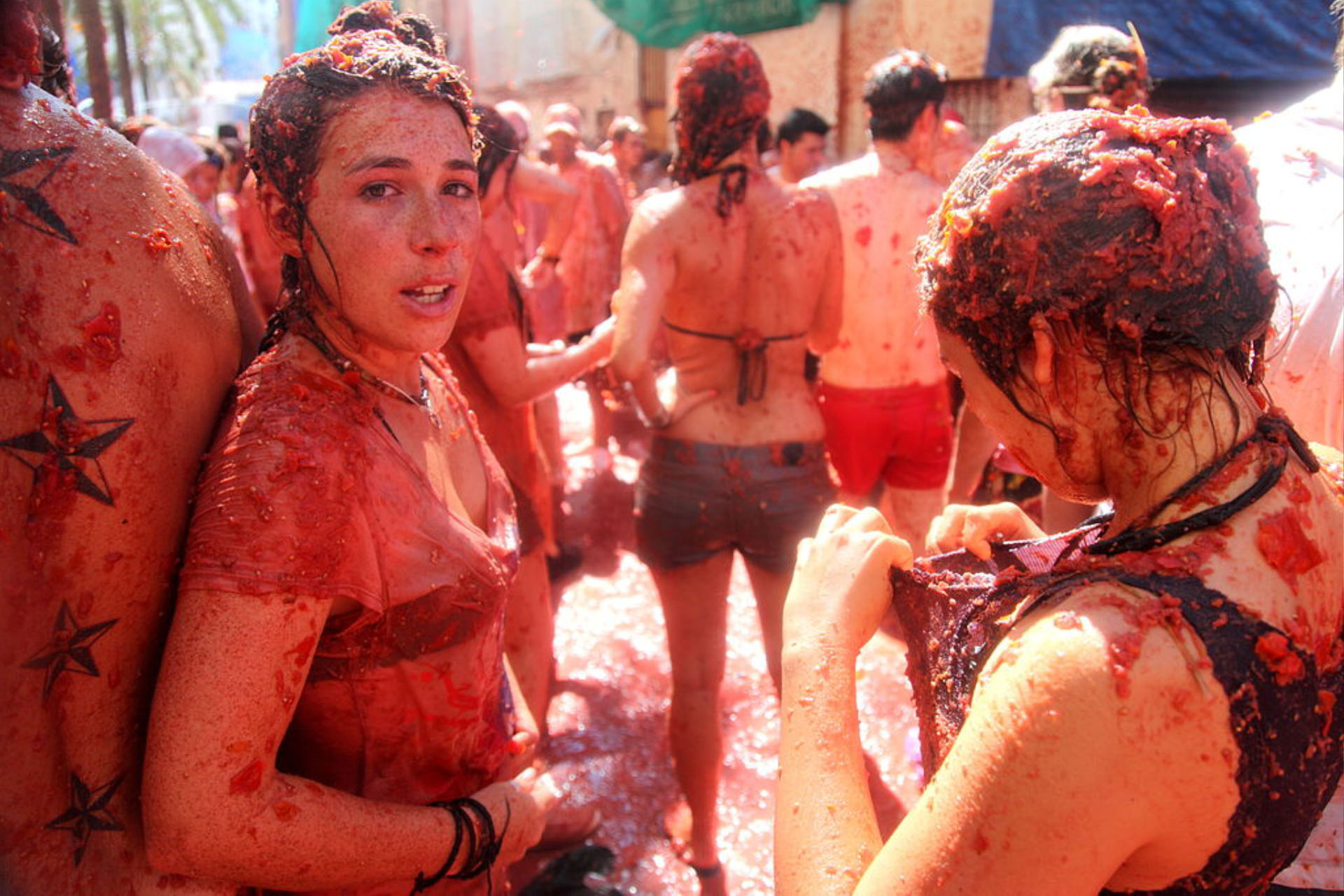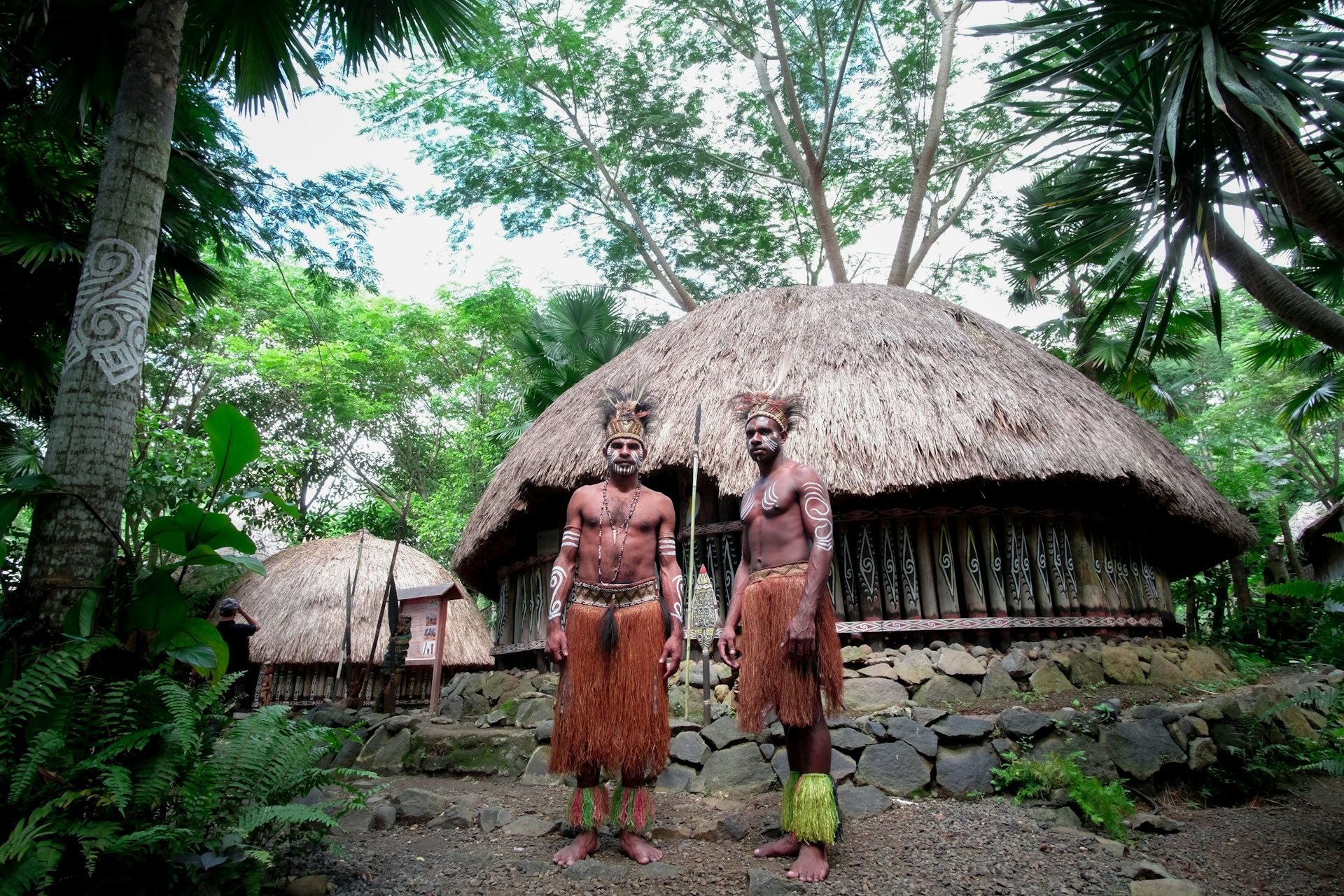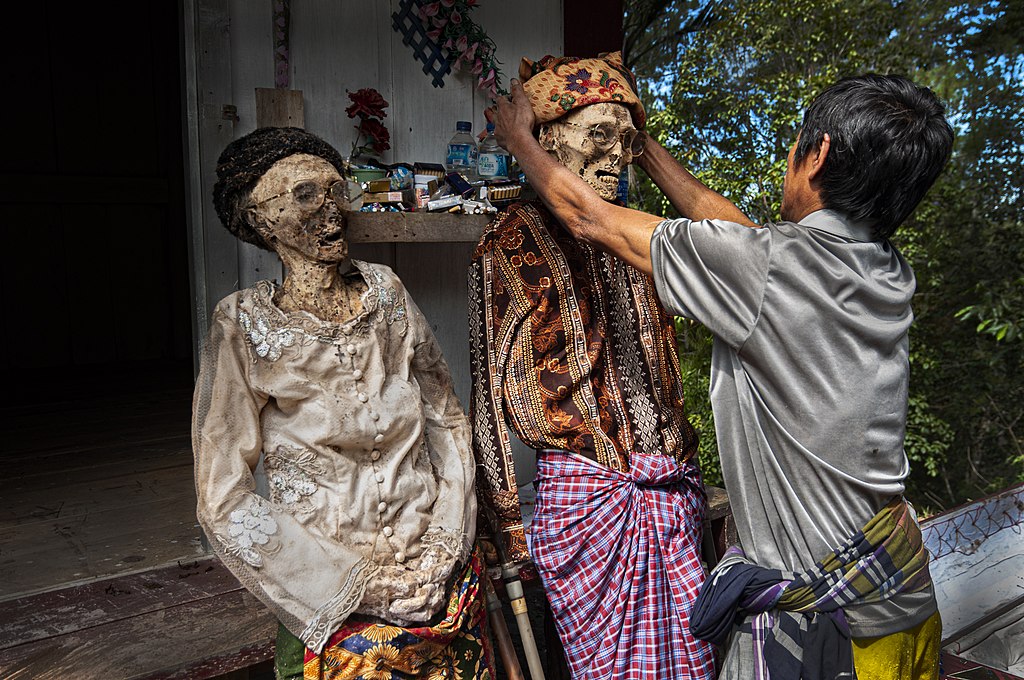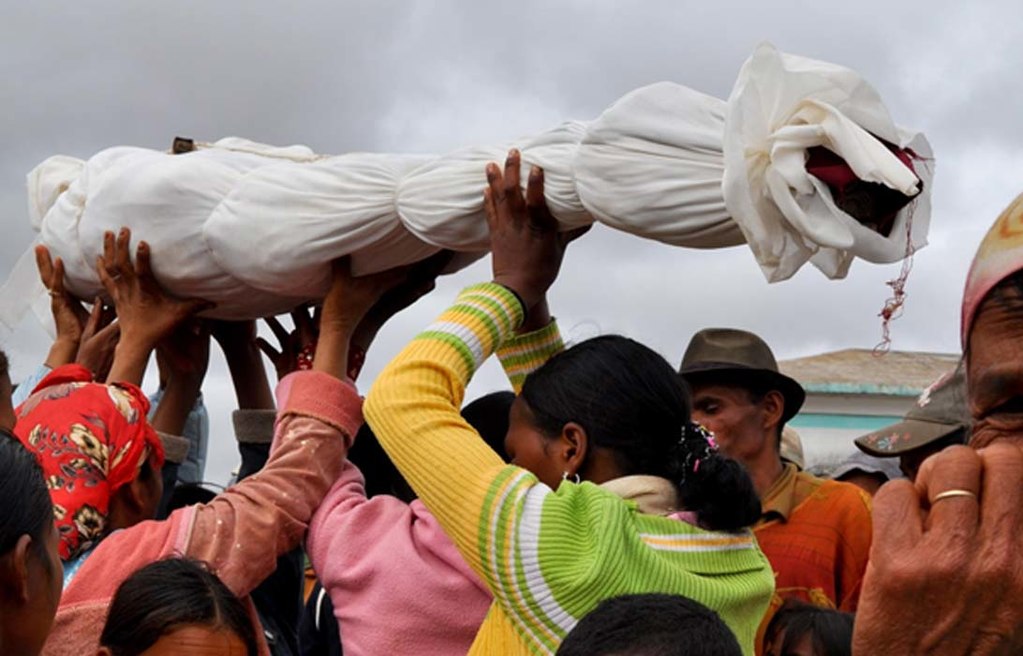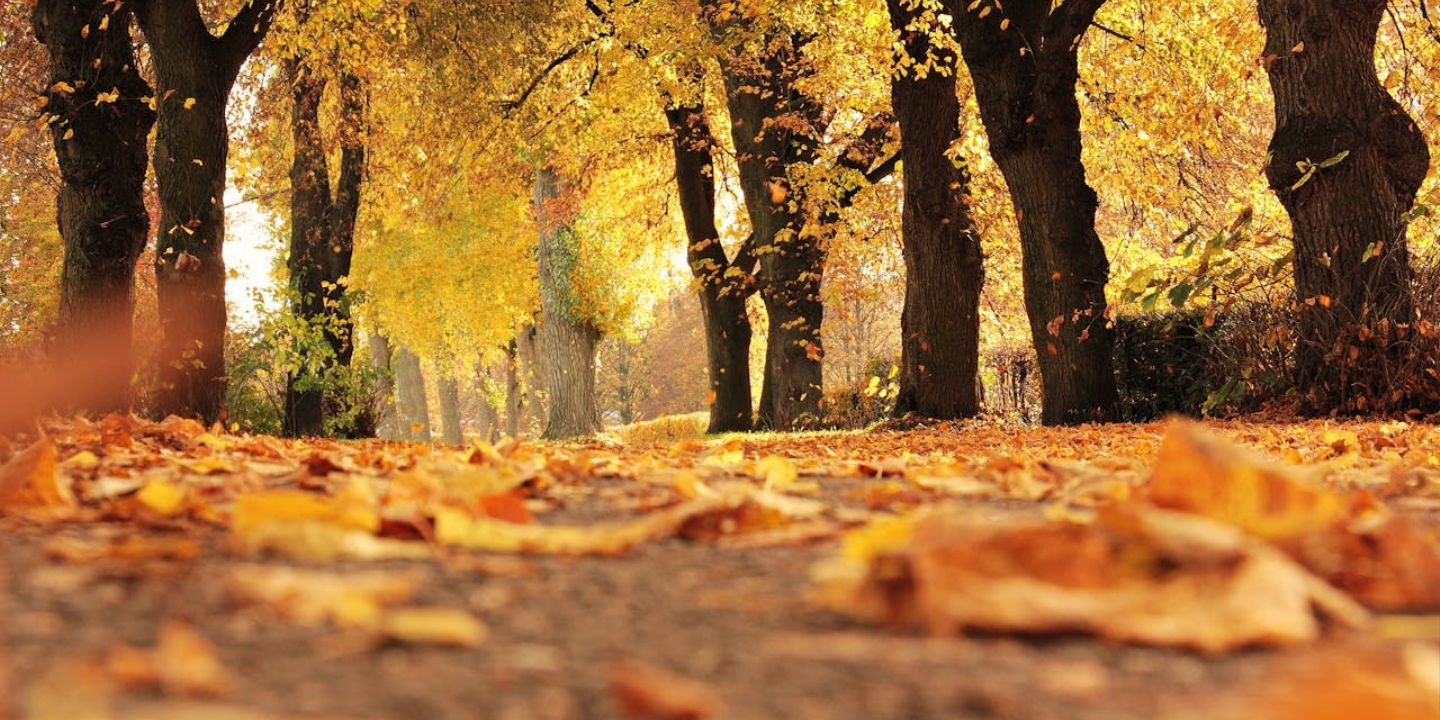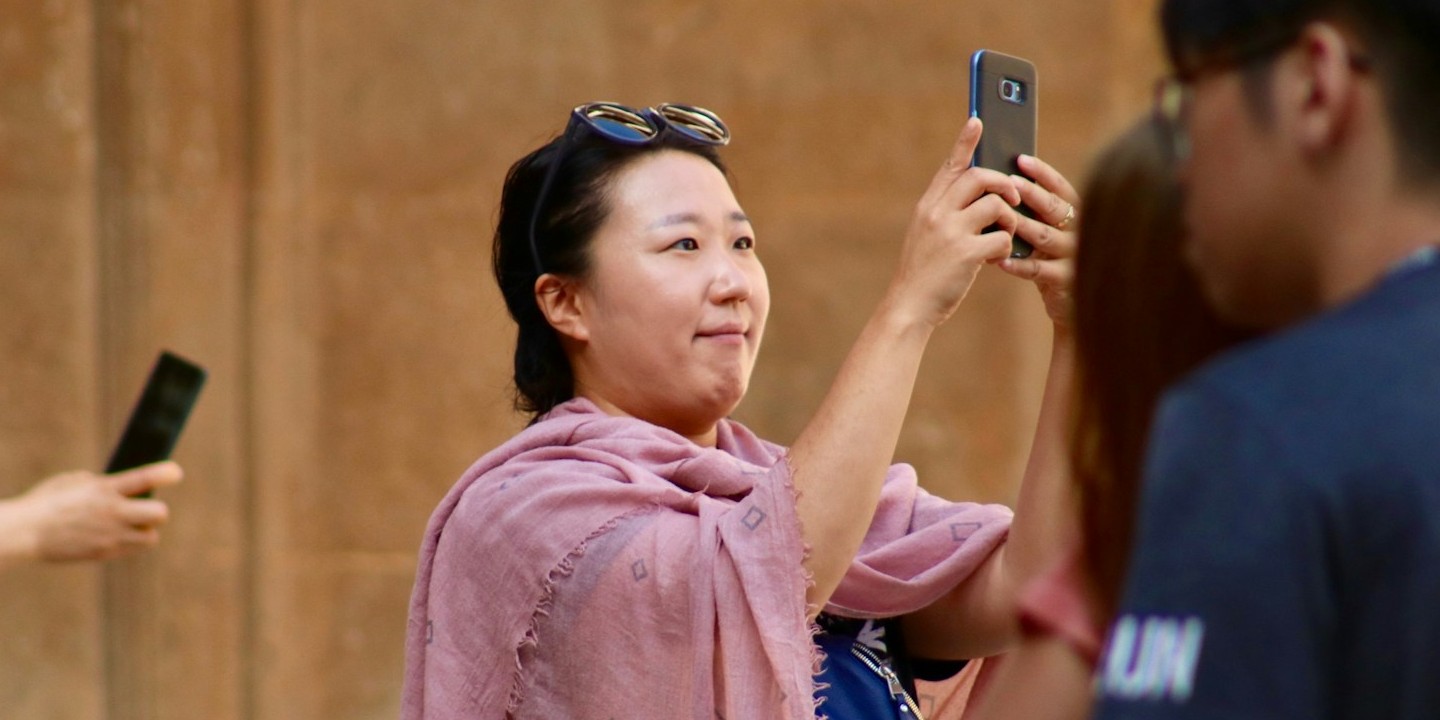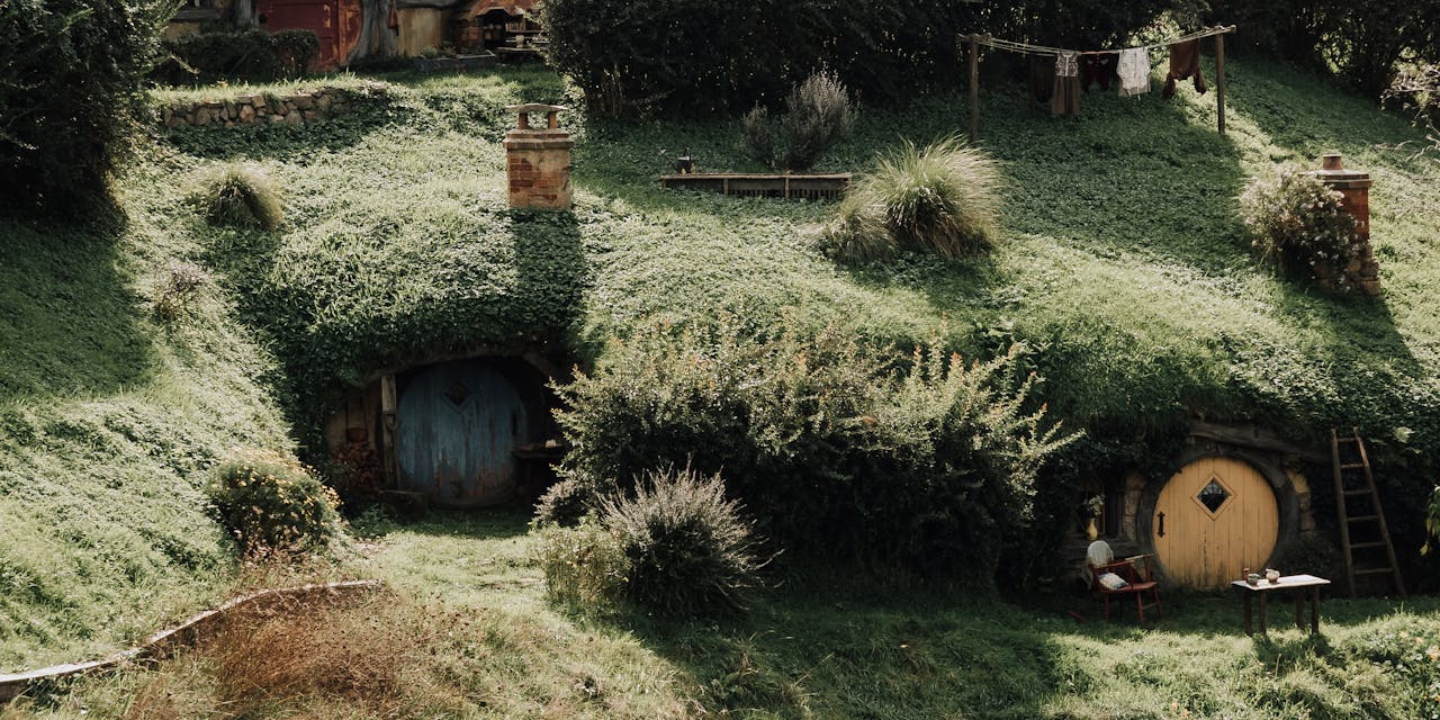Tradition is the lifeblood of any vibrant and enduring culture. Without cultural traditions, there would be little to no distinction between all of the various cultures that exist around the world. Although some of these traditions may seem odd, or even off-putting, it’s important to note that each culture is different in its own way and that’s what makes it unique. So here are 20 fascinating cultural traditions around the world that would shock Americans.
1. La Tomatina (Spain)
Visitors from around the world regularly flock to this fun and quirky annual event. Taking place every year in the town of Buñol, “La Tomatina” is a world-famous event that consists of a massive hour-long tomato fight in which participants pelt each other with overripe tomatoes.
2. Finger Amputation (Indonesia)
Although performed far less frequently due to increasing awareness and education, this brutal tradition was practiced among the Dani tribe in Paua, Indonesia. Meant to serve as the ultimate symbol of pain and grief, women would cut off a portion of their fingers upon losing a loved one to express their sorrow.
3. Night of the Radishes (Mexico)
Dating back to the 19th century, the “Night of the Radishes” takes place each year on December 23rd. Celebrated in Oaxaca, Mexico, this annual event revolves around locals displaying large, intricate radish carvings that are meant to depict a variety of scenes and figures.
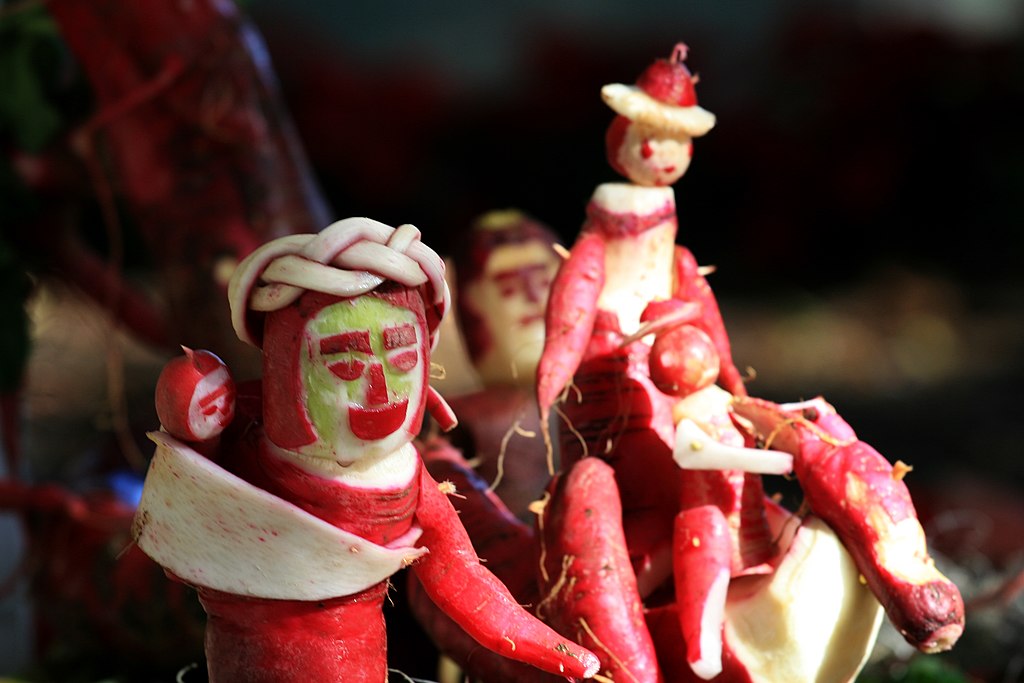 drewleavy on Wikimedia Commons
drewleavy on Wikimedia Commons
4. Baby Jumping Festival (Spain)
Taking place in the Spanish village of Castrillo de Murcia, this annual festival centres around men in devil attire jumping over newborns. Although seemingly nefarious, this centuries-old tradition was devised as a way to cleanse the newborns of original sin and protect them from evil spirits.
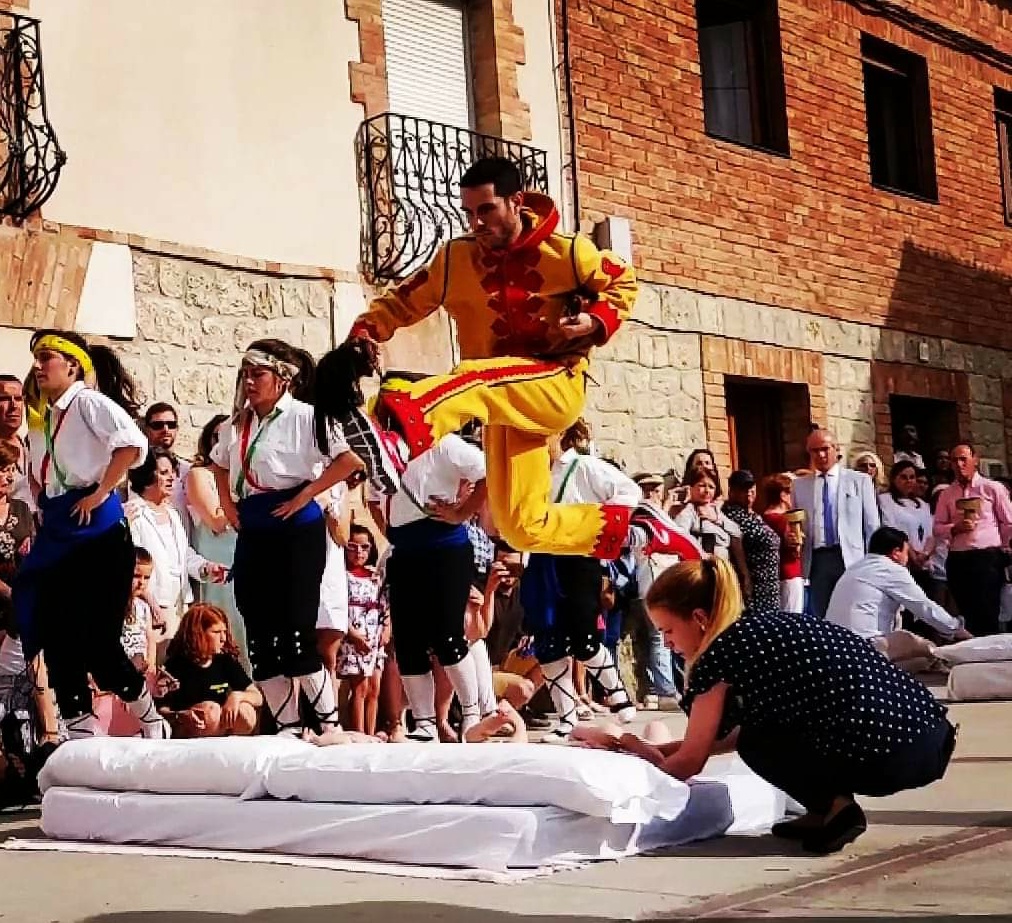 Noe Serna on Wikimedia Commons
Noe Serna on Wikimedia Commons
5. Kanamara Matsuri (Japan)
Rooted in Shinto beliefs, this offbeat festival held in Kawasaki, Japan is now responsible for raising funds for HIV research. The Kanamara Matsuri, or "Festival of the Steel Phallus," is an annual event featuring massive phallic-shaped floats, candies and decorations in celebration of fertility.
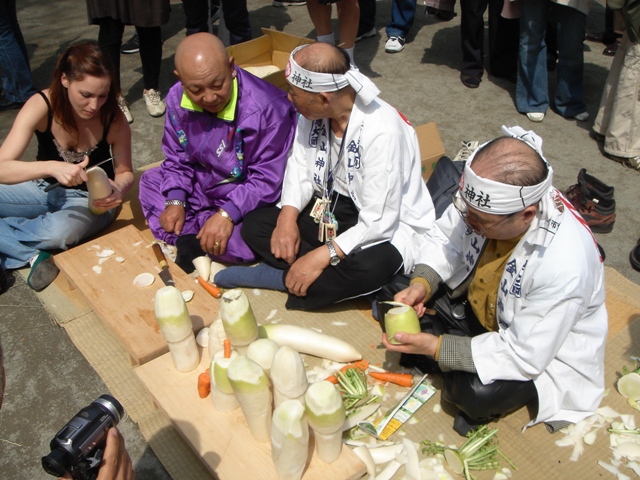 Shoestring at wts wikivoyage on Wikimedia Commons
Shoestring at wts wikivoyage on Wikimedia Commons
6. Walking on Fire (Bulgaria)
Part of a religious celebration which participants believe will bring them good health and prosperity, The Anastenaria festival in Bulgaria is focused on participants who walk barefoot on hot coals while carrying icons of saints. Participants of this painful ritual often describe undergoing a trance-like state, which they believe helps them to overcome any discomfort or pain.
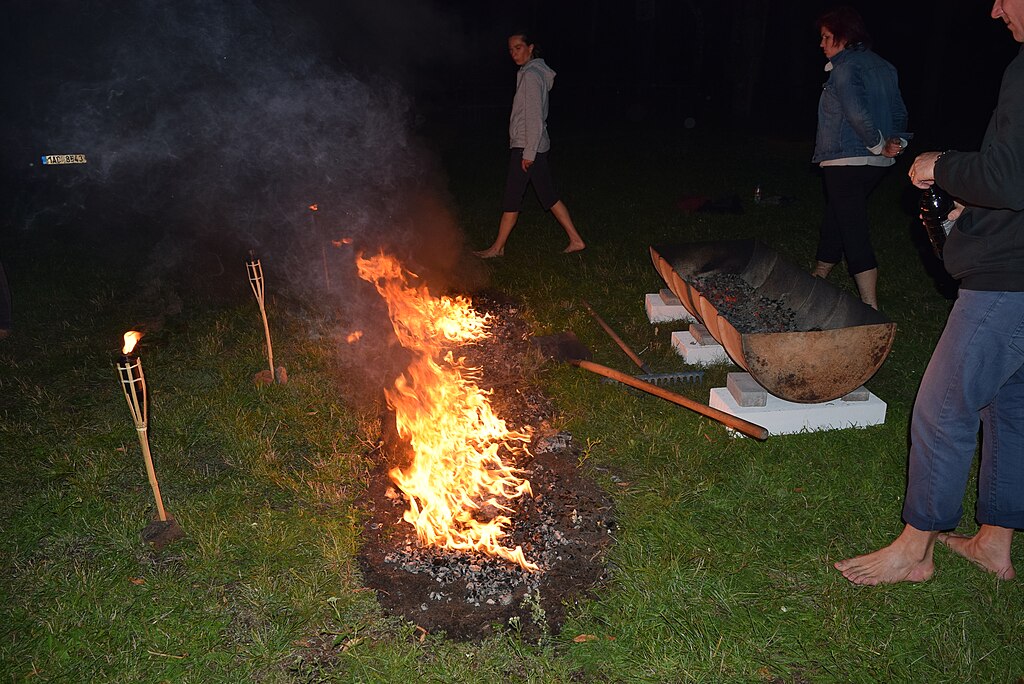 Firewalking on Wikimedia Commons
Firewalking on Wikimedia Commons
7. Monkey Buffet Festival (Thailand)
Held to honour the monkeys who are believed to be harbingers of good fortune to the area, the Monkey Buffet Festival held in Lopburi, Thailand is no doubt a sight to behold. During this unique event, the town’s monkey population is treated to a well-stocked buffet of fruits, vegetables, and sweets.
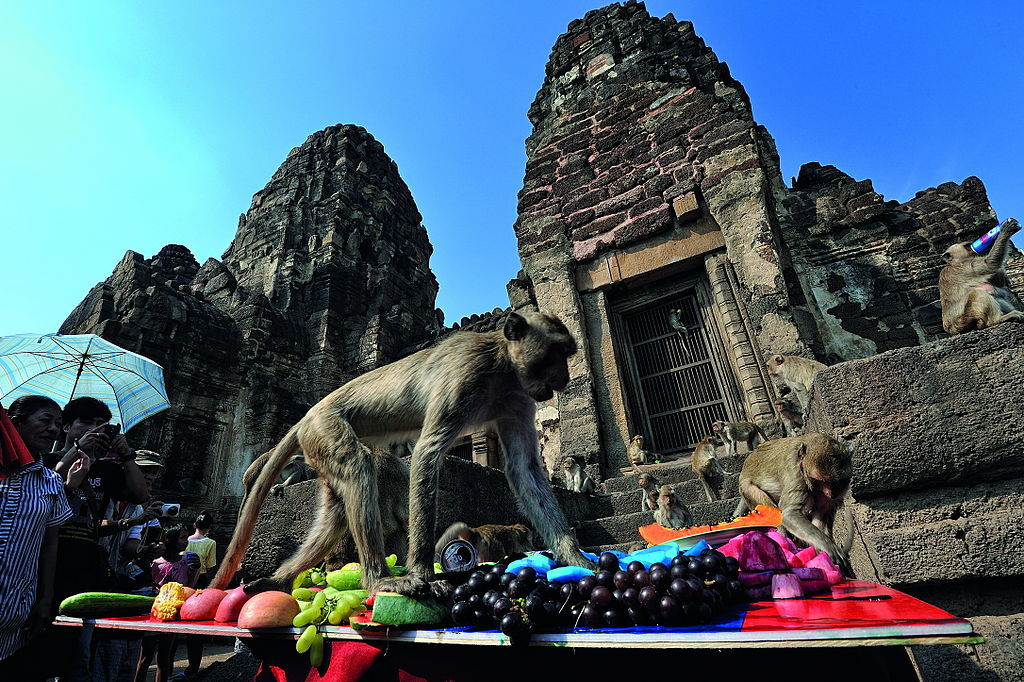 Mr.Peerapong Prasutr on Wikimedia Commons
Mr.Peerapong Prasutr on Wikimedia Commons
8. Blackening of the Bride (Scotland)
This pre-wedding tradition is practiced in certain parts of Scotland. Meant to prepare the would-be couple for the trials and tribulations that await them in marriage, the bride and groom are essentially covered in soot, flour, etc. The messy ordeal is then followed by a celebration with friends and family.
9. Seijin no Hi (Japan)
A day designed to celebrate those who have just turned 20 (the age of adulthood), Seijin no Hi, or Coming of Age Day, is rife with festivals and family gatherings to reign in the momentous day. On this day, ceremonies are held by local governments where the newly-anointed adults dress in traditional attire.
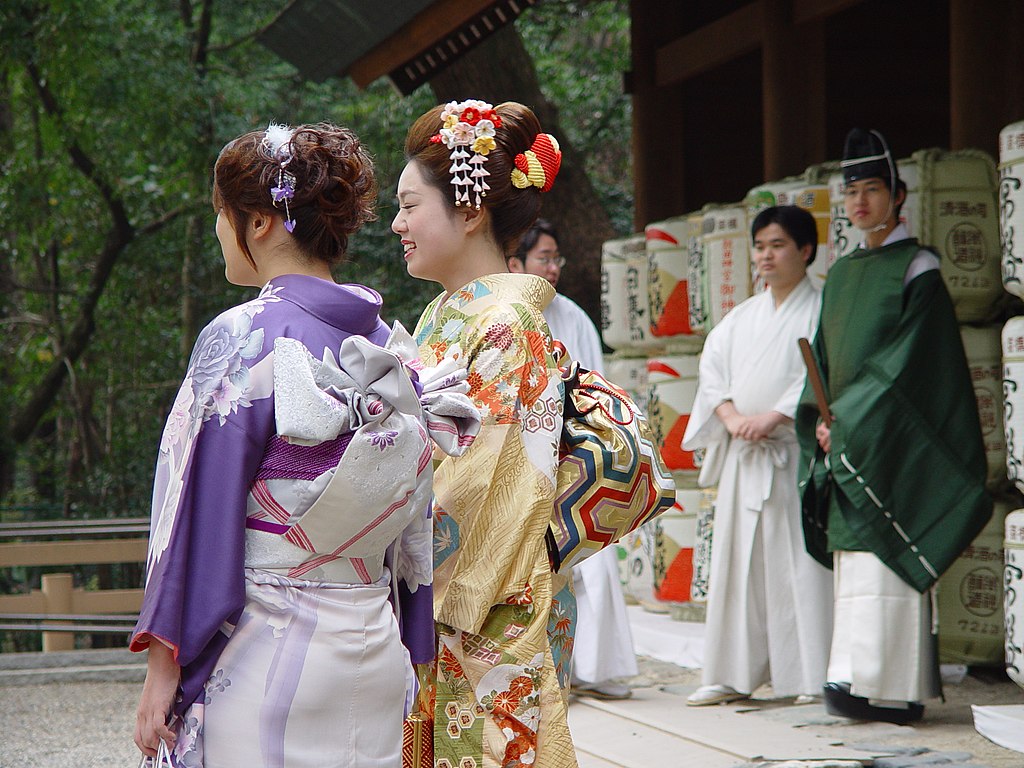 Bruce Dailey on Wikimedia Commons
Bruce Dailey on Wikimedia Commons
10. Polterabend (Germany)
This noisy and chaotic German tradition is meant to bring about good luck to newlyweds. Serving as a precursor to the wedding, Polterabend consists of friends and family coming together to break dishes and pottery that the newlywed couple is then tasked with cleaning up in what serves as a symbol of their ability to work together to overcome any problem that may come their way.
 Stefan-Xp on Wikimedia Commons
Stefan-Xp on Wikimedia Commons
11. Living with the Dead (Indonesia)
This well-known Indonesian tradition is practiced by the Toraja people. To both honour their loved ones and save money for elaborate funeral ceremonies, this practice involves keeping the bodies of deceased relatives in the home for months or even years. These deceased relatives are treated just as though they were alive, even being offered food and drink.
12. Self-Mummification (Japan)
Although no longer practiced, the preserved mummies of those who did choose to take part are now considered relics. Some Buddhist monks in Japan once took part in a practice known as Sokushinbutsu, in which they would follow a strict diet and regimen to gradually desiccate their bodies as they approached their ultimate demise.
 Brooklyn Museum on Wikimedia Commons
Brooklyn Museum on Wikimedia Commons
13. Baby Tossing (India)
This ancient tradition still practiced in parts of India dates back over 500 years in a bid to bring good luck and health to the respective child it’s performed on. This self-explanatory controversial practice involves tossing babies from the roof of a temple with men below who are tasked with catching the falling children in a large cloth.
14. Cheese Rolling (England)
This famous festival is held annually in Gloucestershire, England where loads of participants take part in chasing a massive wheel of cheese down a steep hill. Often resulting in brutal tumbles and injuries, the highly-coveted cheese wheel is awarded to the first participant to cross the finish line.
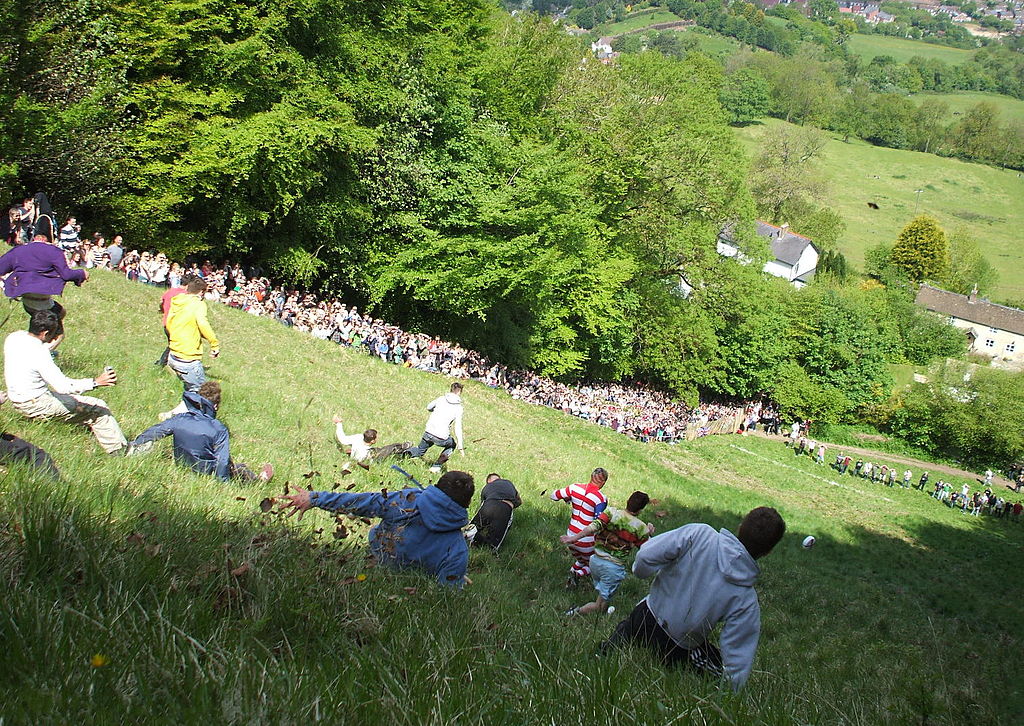 Dave Farrance on Wikimedia Commons
Dave Farrance on Wikimedia Commons
15. Red Ink Taboo (South Korea)
To the uninitiated, writing someone’s name in red ink may sound completely harmless — but in South Korea many believe that it signifies death. This highly disrespectful gesture is considered a bad omen, as red ink was traditionally used in Korea to write down the names of the deceased in family regsisters and gravestones.
16. Walking Marriages (China)
The Mosuo culture of southwestern China is known for their matriarcal practices and way of life. One of the most famous examples of this is their “walking marriages,” in which women are able to freely choose and change their partners at will. Men and women won’t live together and the men will generally visit their partners at night only to return home in the morning, leaving both parties with a greater sense of autonomy.
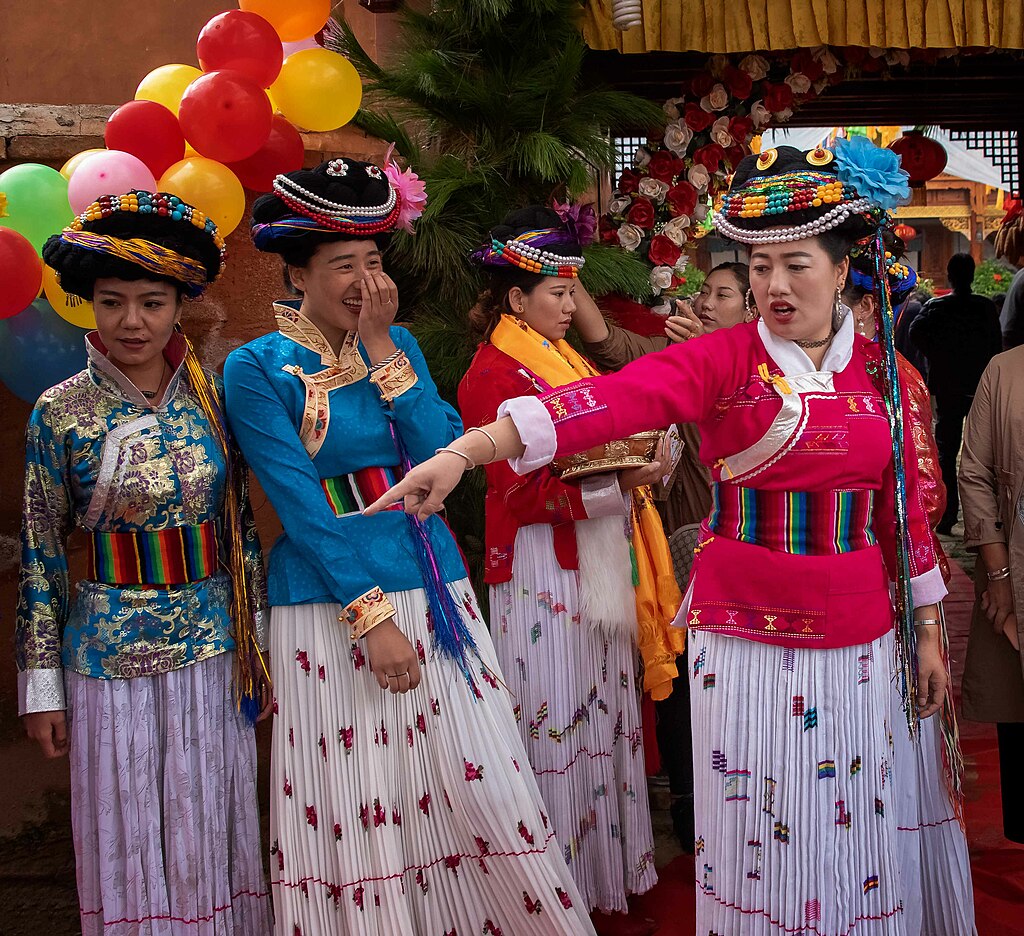 Rod Waddington on Wikimedia Commons
Rod Waddington on Wikimedia Commons
17. Gurning (England)
The Egremont Crab Fair in England is home to one of the world’s most fascinating and bizarre contests. In this centuries-old contest, participants are encouraged to make the ugliest expression possible (an art known at gurning) in what is often seen as the highligh of the entire fair.
18. Buttock Tattooing (Samoa)
This Samoan tradition serves as a right of passage for both men a women. The traditional Samoan tattoo (or tatau) consists of intricate tattooing of the buttocks and thighs; a painful ordeal that serves as a symbol of courage, identity, and social status.
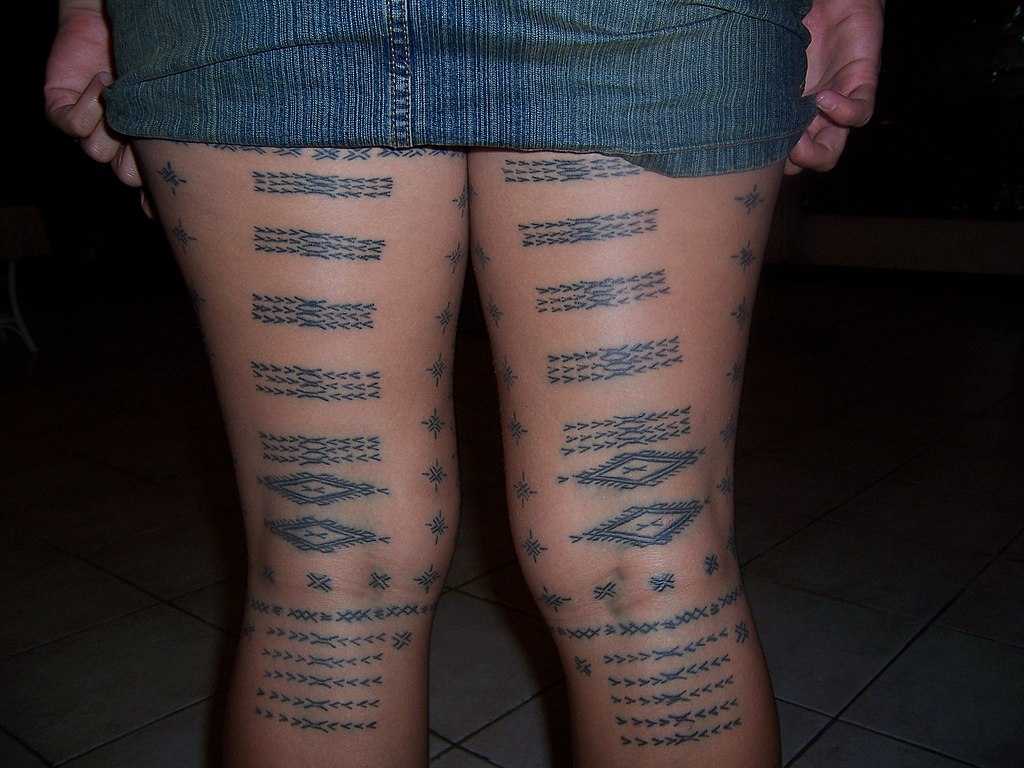 RunningToddler on Wikimedia Commons
RunningToddler on Wikimedia Commons
19. Coffin Hanging (China)
In the cliffs of the Gongxian region in China, the Bo people have practiced this fascinating tradiiton for over 3,000 years! It involves hanging wooden coffins over a ledge or cliff in an effort to place the remains of loved ones closer to the heaven, utlimately honoring them and accelerating their path to the afterlife.
 Peter Tritthart on Wikimedia Commons
Peter Tritthart on Wikimedia Commons
20. Feeding the Dead (Madagascar)
Famadihana, or "the turning of the bones," is ritual practiced by the Malagasy people of Madagascar in which they exume the remain of their ancestors, rewrap them in fresh cloth, and celebrate them with music and dance. This tradition is meant to strengthen familial bonds, honor the dead, and ultimately allow their forbearers to rejoion them in the world of the living.


